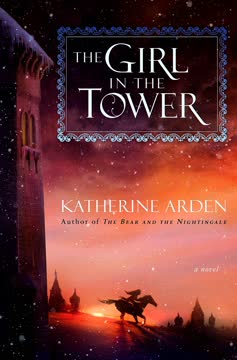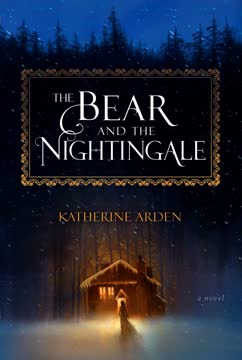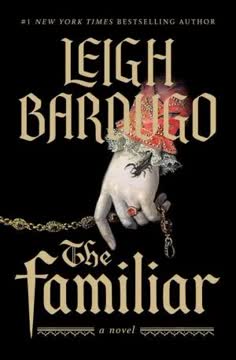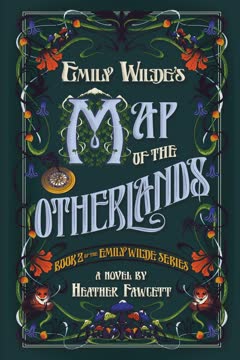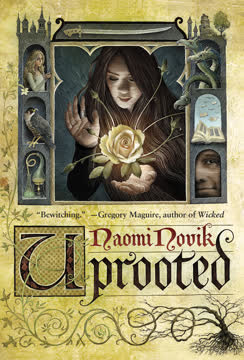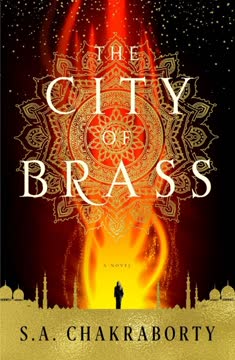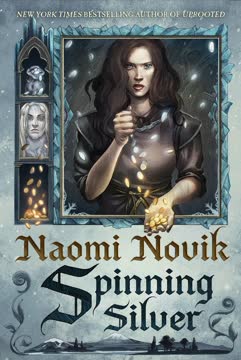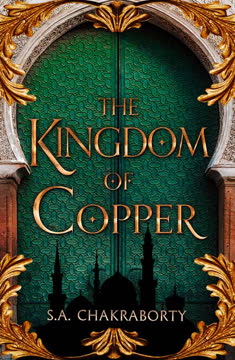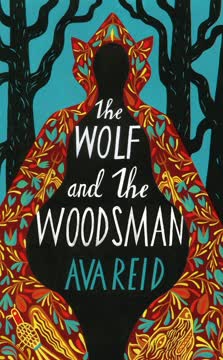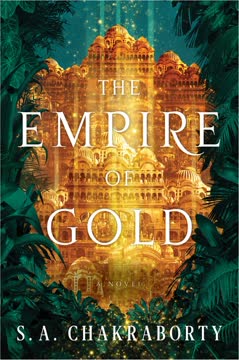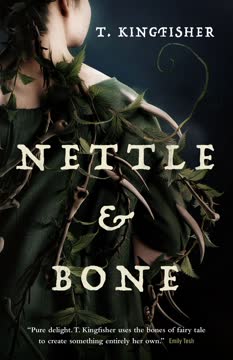Plot Summary
Winter's Daughter Rides Forth
Vasilisa "Vasya" Petrovna, wild and fey, rides her magical stallion Solovey into the Russian wilderness, leaving behind the village that has turned against her. Branded a witch, she cannot remain, nor can she accept the fate of a convent or marriage. The winter forest is both threat and sanctuary, haunted by old gods and new fears. Vasya's journey is one of exile and self-creation, her heart torn by grief for her dead father and the loss of childhood. She seeks freedom, but the world is cold and perilous, and the only certainty is that she must keep moving forward, even as the snow deepens and the night grows long.
Moscow's Shadows and Stories
In Moscow, Vasya's sister Olga lives a life of privilege and confinement, her world circumscribed by the walls of the terem. The city is a place of intrigue, where stories of ghosts and witches mingle with the smoke of a thousand fires. Olga's brother, the monk Sasha, returns from the wilds with news of bandit raids and political unrest. The city's rulers, Grand Prince Dmitrii and his cousin Sasha, must balance ambition with the threat of the Mongol Horde. Meanwhile, the city's women tell tales of the supernatural, and the boundaries between legend and reality blur. Moscow is both a beacon and a prison, its towers reaching for the sky even as its people huddle in fear of the darkness.
Bandits in the Snow
Across the Russian countryside, a wave of violence sweeps through the winter. Bandits, more organized and ruthless than ever, raid villages, burn homes, and steal away girl-children. Sasha and Dmitrii ride out with their men to hunt the raiders, joined by the enigmatic boyar Kasyan Lutovich. The journey is grueling, the cold relentless, and the enemy elusive. Each burned village leaves behind only ashes and grief. The bandits seem to vanish into the snow, leaving no tracks. The land is haunted by loss, and the sense grows that something unnatural is at work, that the old world is slipping away, replaced by a new and more terrible order.
The Sorcerer's Arrival
Kasyan Lutovich, a red-haired lord from the east, arrives in Moscow with a plea for help and a gift of a magnificent horse. He is charming, mysterious, and unsettling, his presence stirring unease among the city's rulers. Kasyan's lands have suffered from the same bandit attacks, and he joins Dmitrii's quest. Yet there is something uncanny about him, a sense of hidden power and ancient secrets. As the hunt for the bandits continues, Kasyan's true nature remains veiled, and his motives ambiguous. He is both ally and threat, a figure out of legend who walks in the world of men.
The Road of Fire
Vasya, disguised as a boy, travels the winter roads, seeking to escape her past and find her place in the world. She faces hunger, cold, and the ever-present danger of discovery. In a small town, her identity is nearly revealed, and she is hunted by men who see her as both prize and threat. Only the intervention of the bathhouse spirit saves her. Fleeing into the wilderness, Vasya is pursued by both human and supernatural enemies. Her journey is one of survival and transformation, as she learns the cost of freedom and the power of her own will.
The Frost-Demon's Gift
Morozko, the Frost-Demon, watches over Vasya, drawn to her courage and defiance. He offers her gifts: a magical knife, lessons in survival, and the protection of his talisman. Their relationship is fraught with tension and longing, a dance between mortal and immortal, warmth and cold. Morozko's gifts are both blessing and burden, binding Vasya to the world of the old gods even as she seeks her own path. The boundaries between love and power blur, and Vasya must decide what she is willing to risk for freedom—and for those she loves.
A Girl Disguised
To survive in a world hostile to women, Vasya takes on the identity of a boy, Vasilii Petrovich. Her skill with horses and her courage in battle win her fame and the favor of Grand Prince Dmitrii. She rescues stolen children, fights bandits, and becomes a legend in her own right. Yet the lie is a fragile shield, and the danger of exposure grows with every victory. Vasya's double life is a tightrope walk between worlds, and the cost of her deception weighs heavily on her soul.
The Bandit's Mask
The bandit raids are revealed to be the work of a conspiracy, with ties to the highest levels of power. The Tatar ambassador, Chelubey, is unmasked as the bandit leader, his true identity hidden behind a mask of diplomacy. Kasyan's involvement becomes more sinister, his motives darker. Vasya's warnings go unheeded, and the city is drawn into a web of intrigue and betrayal. The line between friend and foe blurs, and the true enemy is not always the one who wields the sword.
The Horse-Tamer's Challenge
In a public contest, Vasya's skill with horses is put to the test against Kasyan's magical mare. The race is both spectacle and trap, a stage for rivalry and revelation. Kasyan's true nature is hinted at, and Vasya's disguise is finally torn away. Exposed as a woman before all Moscow, she is cast down from hero to outcast. The city turns against her, and the consequences of her choices come crashing down. Yet even in defeat, Vasya's spirit remains unbroken, and the seeds of resistance are sown.
The Sorcerer's Wife
Imprisoned and disgraced, Vasya is offered a terrible choice by Kasyan, revealed as the immortal sorcerer Kaschei the Deathless. He promises to save her family if she will marry him, binding her to his will. Vasya faces the full weight of her powerlessness, her body and soul threatened by a man who would possess her utterly. Yet even in despair, she finds allies among the spirits and the dead. The struggle becomes one not just for survival, but for the soul of Moscow itself.
The Tower of Bones
In the heart of the city, Vasya confronts the truth of her lineage and the legacy of her grandmother Tamara. The tower is a place of memory and magic, haunted by the past. With the help of ghosts and her own courage, Vasya breaks Kaschei's hold, freeing both the living and the dead. The cost is high, and the wounds are deep, but the power of love and memory proves stronger than any spell. The old world passes, and a new one is born in fire and blood.
The City in Flames
The firebird, unleashed by Vasya's actions, sets the city ablaze. Chaos reigns as enemies attack from within and without. Vasya, wounded and desperate, must choose between escape and sacrifice. The city's fate hangs in the balance, and only the intervention of the frost-demon can turn the tide. In the crucible of fire, old enmities are burned away, and the true strength of the human heart is revealed.
The Day of Forgiveness
As the snow falls and the flames die, the survivors gather to mourn and to forgive. Vasya is reunited with her family, her secrets laid bare. The bonds of love and loyalty are tested, but not broken. The city begins to heal, and the promise of spring glimmers on the horizon. The old gods fade, but their memory endures in the hearts of those who remember. Vasya's journey is not over, but she has found her place in the world, and the courage to shape her own destiny.
Sisters and Survivors
Vasya, Olga, and Sasha come together in the aftermath of disaster, their wounds both visible and hidden. The sisters reconcile, their love tempered by hardship and understanding. Marya, the next generation, is protected and cherished, her gifts recognized and nurtured. The family's story is one of survival and transformation, of old wounds healed and new hopes kindled. The world has changed, but the ties that bind remain strong.
The End of Winter
As winter recedes and the snow melts, Vasya stands at the threshold of a new life. The old magic lingers, but the world moves on. The lessons of the past are not forgotten, and the promise of the future is bright. Vasya's journey has been one of pain and wonder, of loss and love. She is no longer a child, nor merely a witch or a wanderer, but a woman who has claimed her own story. The end of winter is not the end, but a beginning.
Characters
Vasilisa "Vasya" Petrovna
Vasya is the heart of the story—a girl born with the gift of seeing the old spirits of Russia, marked as different from childhood. Her refusal to accept the narrow roles prescribed for women—wife, nun, or outcast—drives her into exile and adventure. Disguised as a boy, she becomes a hero, but her journey is one of self-discovery as much as survival. Vasya's psyche is shaped by grief, longing for freedom, and a deep empathy for both the living and the supernatural. Her relationships—with her siblings, with Morozko, with the spirits—are fraught with love, loss, and the struggle for agency. By the end, she is transformed: no longer just a witch or a wanderer, but a woman who has claimed her own power and place in the world.
Morozko, the Frost-Demon
Morozko is the ancient winter-king, a being of cold and death, yet capable of tenderness and love. His relationship with Vasya is complex—a blend of mentor, protector, and would-be lover. He is both fascinated and threatened by her humanity, drawn to her spirit even as he fears the loss of his own immortality. Morozko's gifts are double-edged, binding Vasya to the old world even as she seeks her own path. His struggle is one of identity: to be a god, a memory, or something new. In the end, his love for Vasya is both his undoing and his redemption, as he chooses mortality over fading into legend.
Olga Vladimirova
Olga, Vasya's older sister, is a princess of Moscow, living a life of privilege and restriction. She is a survivor, skilled in the politics of the terem, fiercely protective of her children and her family's reputation. Olga's relationship with Vasya is fraught with guilt, love, and misunderstanding. She envies Vasya's freedom but fears its consequences. Her journey is one of reconciliation—with her sister, with her own desires, and with the changing world. Olga embodies the tension between tradition and change, her strength found in endurance and adaptation.
Aleksandr "Sasha" Peresvet
Sasha, Vasya's brother, is a monk and a warrior, caught between the demands of faith, family, and duty. He is Dmitrii's confidant and Vasya's protector, but his loyalty is tested by the lies he must tell and the choices he must make. Sasha's psyche is marked by a longing for peace and a sense of responsibility for those he loves. He struggles with the contradictions of his role: to fight for God, to serve a prince, to shelter a sister who defies all rules. His arc is one of sacrifice and forgiveness, learning to accept imperfection in himself and others.
Kasyan Lutovich / Kaschei the Deathless
Kasyan is the story's central antagonist—a sorcerer who has hidden his life outside his body, making himself immortal. He is both alluring and terrifying, a figure of legend who manipulates events for his own ends. Kasyan's motives are rooted in loss, longing, and a hunger for power. His relationship with Vasya is predatory, seeking to possess her gifts and bind her to him. Yet he is also haunted by love and regret, his immortality a curse as much as a triumph. Kasyan embodies the dangers of unchecked ambition and the cost of denying mortality.
Grand Prince Dmitrii Ivanovich
Dmitrii is the ruler of Moscow, a man of vision and appetite, striving to free his city from the yoke of the Mongol Horde. He is both generous and ruthless, capable of great kindness and great anger. Dmitrii's relationship with Sasha and Vasya is complex—he admires their courage but is quick to turn when betrayed. His arc is one of leadership under pressure, forced to confront the limits of power and the necessity of trust. Dmitrii represents the new Russia, poised between tradition and change.
Marya Vladimirovna
Marya, Olga's daughter, is a child with the same sight as Vasya, able to see the spirits of the old world. She is curious, brave, and rebellious, longing for freedom beyond the walls of the terem. Marya's vulnerability makes her a target for Kasyan, but her resilience and the love of her family save her. She represents the next generation, the hope that the old magic and the new world can coexist.
Konstantin Nikonovich
Konstantin is the priest whose fear of the supernatural drives much of the conflict. Once charismatic and devout, he becomes obsessed with rooting out witches, his own desires and weaknesses twisted into fanaticism. Konstantin's psyche is marked by guilt, longing, and self-loathing. He is both victim and perpetrator, manipulated by Kasyan and undone by his own obsessions. His arc is a cautionary tale of the dangers of fear and the loss of self.
Solovey
Solovey, Vasya's stallion, is more than a horse—he is a creature of the old magic, capable of understanding human speech and acting with agency. He is Vasya's constant companion, protector, and confidant. Solovey's presence grounds Vasya, reminding her of her roots and her connection to the natural world. He represents the enduring power of the old ways, steadfast in the face of change.
Tamara
Tamara, Vasya's grandmother, is a spirit trapped by love and loss, her life bound to Kasyan's immortality. She is both victim and guide, her story a warning and a hope. Tamara's intervention helps Vasya break the sorcerer's hold, freeing both the living and the dead. Her arc is one of sacrifice and release, the power of memory and love to heal even the deepest wounds.
Plot Devices
Dual Worlds: Pagan and Christian
The novel's structure is built on the tension between the old pagan spirits and the encroaching power of Christianity. Vasya's ability to see and interact with chyerti (spirits) places her between worlds, embodying the conflict between tradition and change. The narrative uses this duality to explore themes of identity, belonging, and the cost of forgetting the past. The spirits' fading mirrors the loss of magic and wonder in a world increasingly ruled by fear and order.
Disguise and Identity
Vasya's disguise as a boy is both a literal and metaphorical device, allowing her to navigate a world hostile to women while exploring questions of gender, power, and selfhood. The motif of masks extends to other characters—Kasyan's hidden immortality, Chelubey's false identity, the city's own double life as both beacon and prison. The unmasking of Vasya is a pivotal moment, forcing her and those around her to confront uncomfortable truths.
Foreshadowing and Prophecy
The narrative is rich with foreshadowing—prophecies from spirits, dreams of ghosts, and the ever-present threat of the Bear's return. These elements create a sense of inevitability, as characters struggle to shape their own destinies within the bounds of fate. The use of prophecy heightens tension and underscores the novel's themes of choice and consequence.
Magical Realism and Symbolism
The supernatural is woven seamlessly into the fabric of the story, with spirits, demons, and magic serving as both literal and symbolic forces. The firebird, the frost-demon, and the Tower of Bones are not just plot devices but embodiments of transformation, desire, and the struggle between life and death. The magical elements are used to explore psychological and societal change, making the fantastical both intimate and universal.
Narrative Structure: Interwoven Perspectives
The novel shifts between Vasya's journey, the intrigues of Moscow, and the perspectives of secondary characters. This structure allows for a rich exploration of the story's themes from different angles—female confinement, male ambition, spiritual crisis, and the collision of old and new. The interwoven narratives build suspense and deepen the emotional impact, culminating in a convergence of plotlines in the city's fiery climax.
Analysis
The Girl in the Tower is a powerful meditation on the struggle for agency in a world defined by tradition, fear, and the erosion of wonder. Through Vasya's journey—from outcast to hero, from girl to legend—the novel interrogates the roles imposed on women, the dangers of forgetting the past, and the necessity of forging one's own path. The interplay between pagan and Christian, magic and reason, is not just historical but deeply psychological, reflecting the tensions within individuals and societies in times of change. Arden's narrative is both a love letter to Russian folklore and a critique of the forces that seek to confine and control. The story's emotional arc is one of loss and reconciliation, of wounds healed and new hopes kindled. In the end, The Girl in the Tower is a celebration of resilience, the enduring power of love and memory, and the courage to claim one's own story—even in the face of winter's longest night.
Last updated:
Review Summary
The Girl in the Tower is a highly praised sequel to The Bear and the Nightingale, continuing Vasya's story in medieval Russia. Readers appreciate the enchanting prose, complex characters, and immersive atmosphere. The book expands on Russian folklore and explores themes of family, bravery, and women's roles. Many found it more action-packed and engaging than its predecessor, with higher stakes and political intrigue. While some felt it lacked the same emotional impact, most reviewers eagerly anticipate the trilogy's conclusion.
